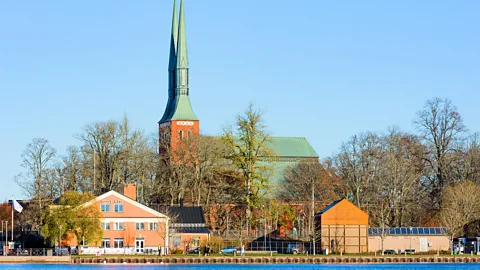A 'crazy town looking to go fossil free': Sweden's wooden city that was green before Greta
 Getty Images
Getty ImagesNearly a decade before Swedish climate activist Greta Thunberg was even born, Växjö set itself on a path to a new vision of green urban living.
The 1,000-year-old Swedish city of Växjö sits 450km south-west of Stockholm in the central region of Småland amid a lush tapestry of sylvan landscapes dotted by hundreds of lakes. This is a land known as the Glasriket ("Glass Kingdom") that's home to a string of globally renowned glassworks such as Kosta Boda and Orrefors who have created crystalline gorgeousness from fiery furnaces since the 1740s.
But that glassmaking heritage is now matched by changemaking: this compact city of fewer than 100,000 inhabitants has become a global beacon in the battle against climate change. Nearly a decade before Swedish climate activist Greta Thunberg was even born, Växjö set itself on a path to a new vision of urban living that's now been emulated worldwide.
"It was a seminar in 1996 led by the mayor, which asked the question: 'What would it be like to live in a fossil free city">window._taboola = window._taboola || []; _taboola.push({ mode: 'alternating-thumbnails-a', container: 'taboola-below-article', placement: 'Below Article', target_type: 'mix' });
